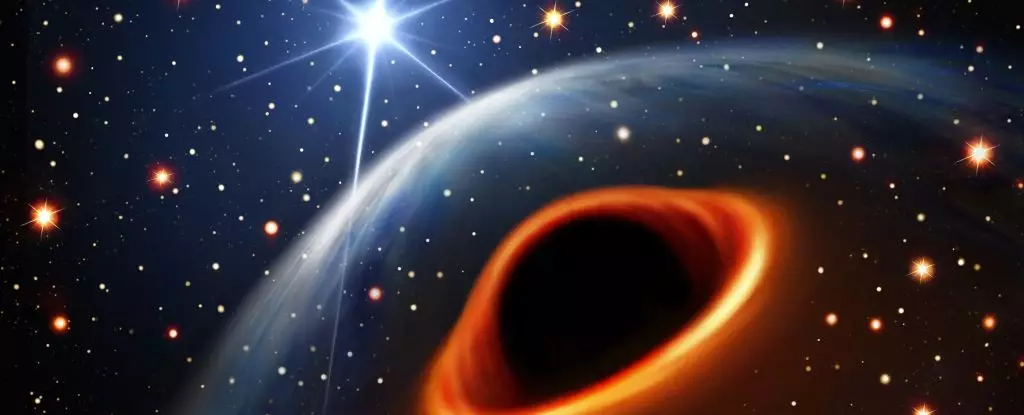In the vast expanse of the universe, black holes have long captivated the imaginations of astronomers and scientists alike. Recent observations of a peculiar red giant star, designated G3425, situated approximately 5,825 light-years from Earth, have rekindled interest in the nature of these enigmatic celestial phenomena. This red giant seems to be engaged in an unusual orbital dance, suggesting the presence of a binary companion. However, the oddity lies in the complete absence of emitted light from the region where this companion is supposed to exist. Researchers led by Song Wang from the Chinese Academy of Sciences have embarked on a journey to comprehend this bizarre cosmic waltz.
Their analysis unveils an intriguing possibility: the unseen companion likely possesses a mass about 3.6 times that of our Sun. This weight class positions it squarely within a poorly understood region referred to as the “mass gap” — an elusive domain in black hole creation and observation that has puzzled scientists for years. The implications of this discovery are profound; G3425 may offer a window into understanding black holes that are too small to dominate their environments and, as such, remain camouflaged from our observational tools.
The concept of the mass gap introduces complexities in the study of black holes. Current astrophysical models acknowledge a spectrum of ultra-dense remnants formed from the cores of dying stars. Smaller progenitors create white dwarfs or neutron stars, but the trajectory diverges for those that exceed approximately 2.3 solar masses. Beyond this threshold, the relentless force of gravity compels stars to collapse, ultimately giving rise to black holes. Yet, a scarcity of detected candidates exists below five solar masses, leading to two substantial questions: Are we merely inefficient in locating them, or do natural forces inhibit their formation?
While observational challenges are indeed formidable—especially since black holes do not emit detectable light unless they are engaging in accretion processes—their gravitational influence on surrounding materials provides indirect evidence of their presence. Less massive black holes, however, reveal subtler interactions, complicating detection efforts. Thankfully, advancements in observational technology, such as the ongoing Gaia mission by the European Space Agency, are enhancing our ability to map stellar motions within the Milky Way. This mission serves as a vital tool in identifying stars that appear to be in gravitational relationships with unseen bodies, ultimately aiding our search for these elusive black holes.
Utilizing sophisticated spectroscopy techniques in conjunction with data from Gaia, Wang and his team sought to uncover the secrets behind G3425’s movements. The red giant, possessing an estimated mass of about 2.7 solar masses, orbits its mysterious companion in a remarkable circular pattern—approximately every 880 days. This stable orbit poses significant challenges to existing theories of binary evolution and supernova explosions. Typically, the cataclysmic events that give rise to black holes generate considerable disturbances, resulting in eccentric, elliptical orbits for their progenitors.
G3425, however, appears remarkably stable, suggesting that its formation history diverges from classic binary models. This invites questions not only about the origins of black holes but also about the geometries of stellar evolution processes. The contrasts seen in G3425 challenge current paradigms, prompting astronomers to think critically about the potential variations in black hole creation and behavior.
The revelations surrounding G3425 hold promise not solely for this particular instance but for broader astrophysical inquiry. As researchers continue their quest to identify and analyze more low-mass black holes throughout the galaxy, the potential to amass statistical significance grows. By accumulating data from multiple candidates, scientists can develop a more comprehensive understanding of the formation mechanisms at play, elucidating how different mass groups exist and evolve in the universe.
A systematic examination of such findings could revolutionize our comprehension of black hole demographics and their roles in cosmic architecture. G3425 stands not only as a marker for a potential new class of black holes but as a herald of a future where the mysteries of the universe may gradually unfold, guided by curiosity and advances in astronomical technology. The path toward understanding low-mass black holes is laden with questions, yet, with each discovery like that of G3425, we inch closer to illuminating the dark contours of our universe.


Leave a Reply